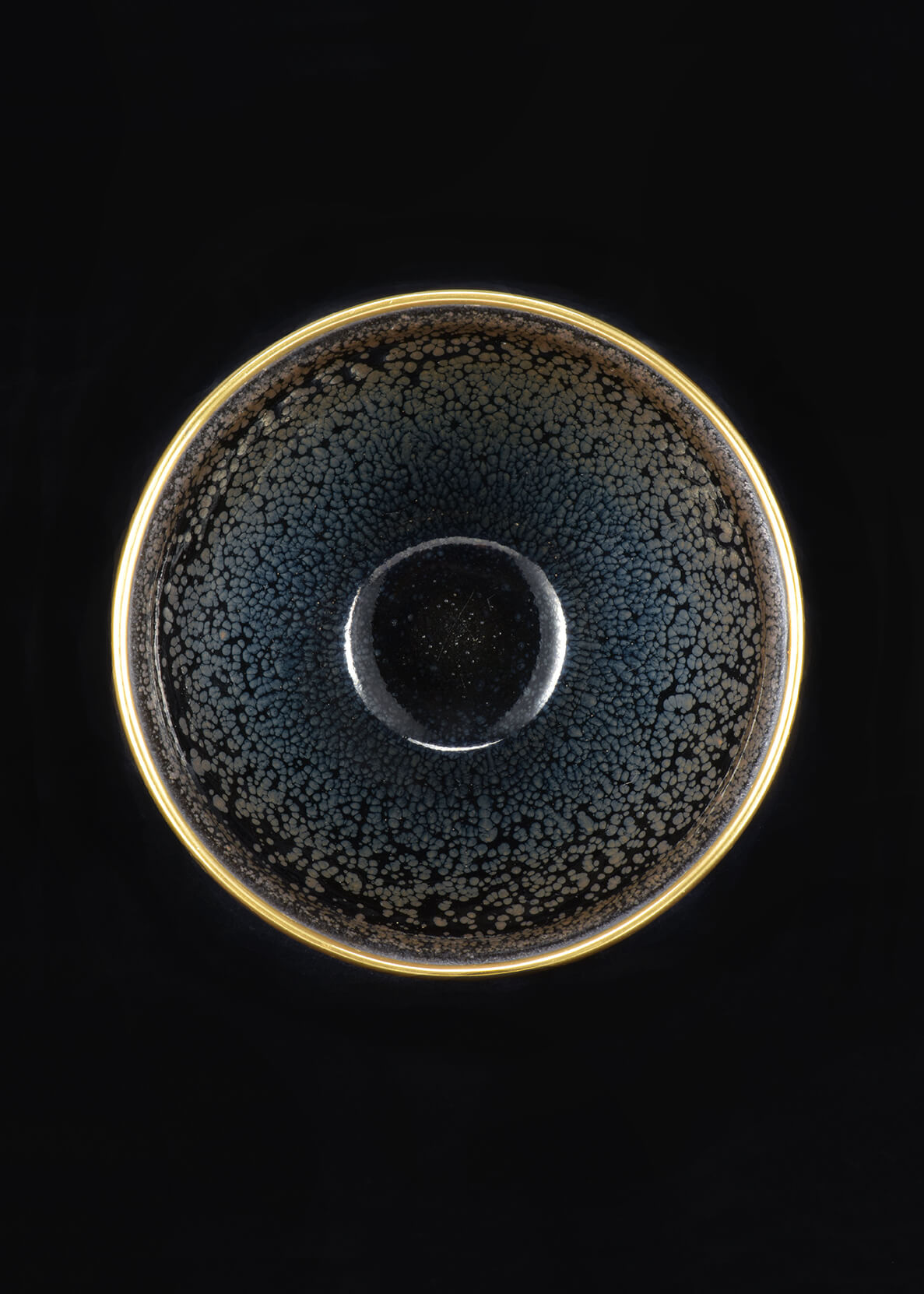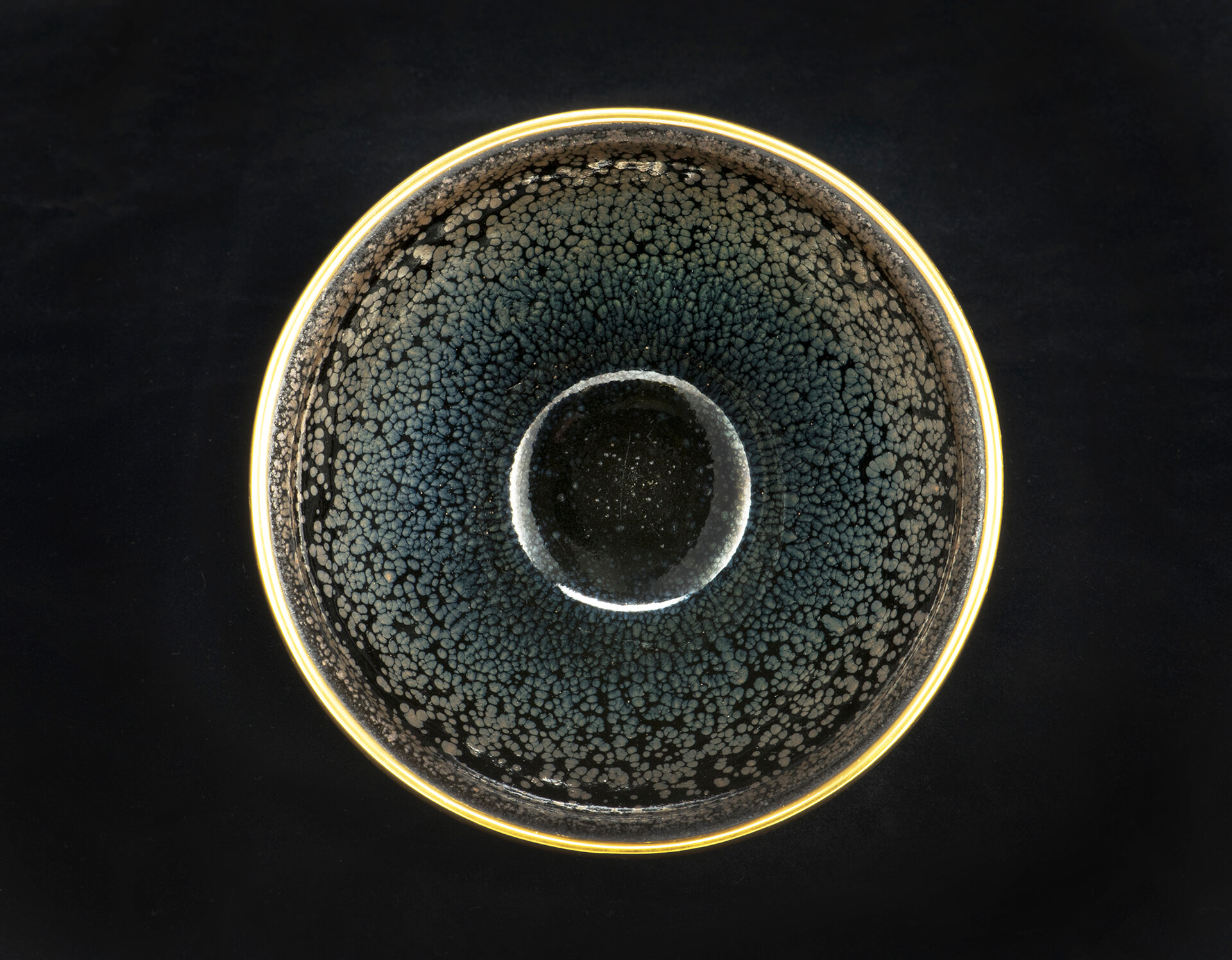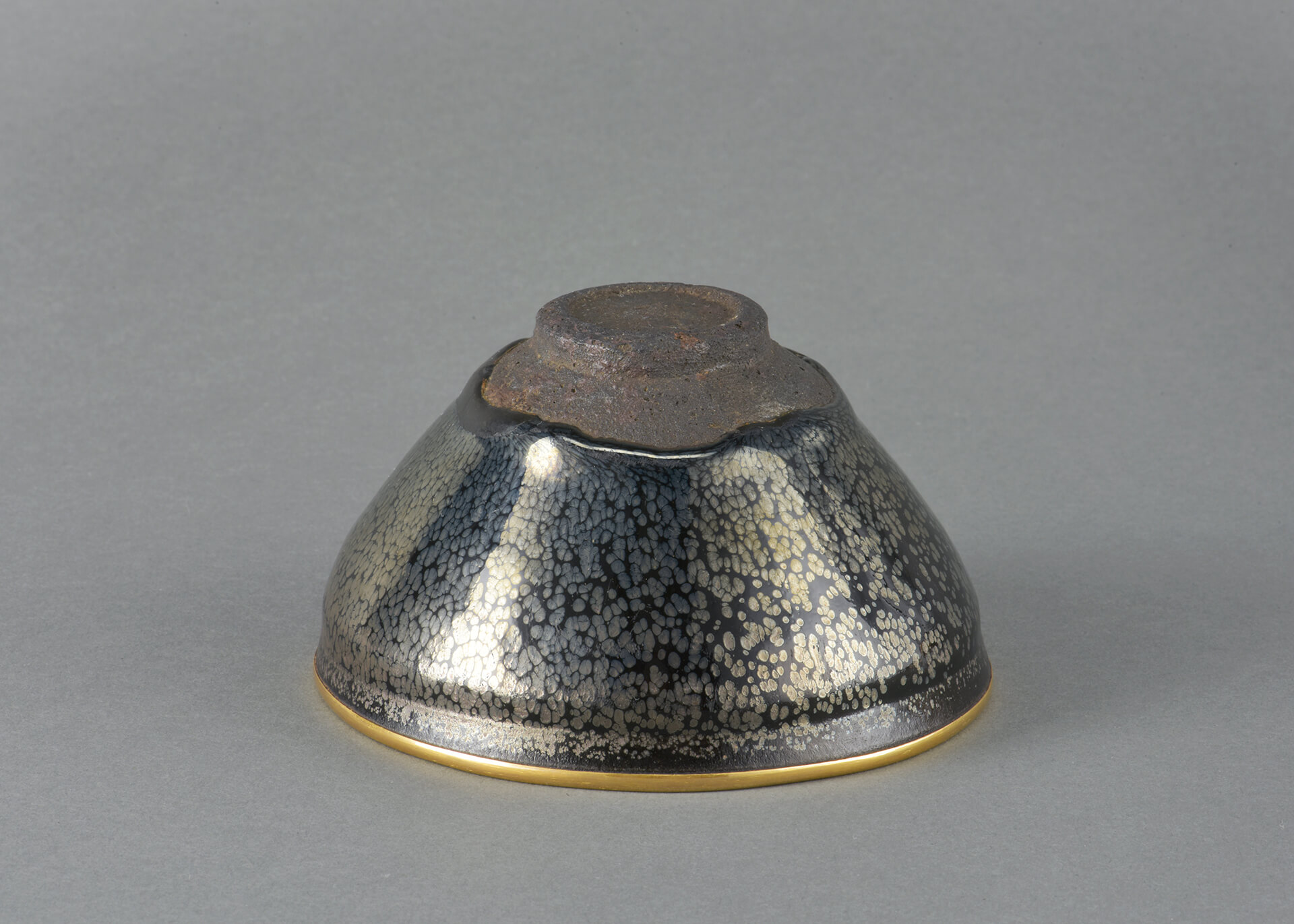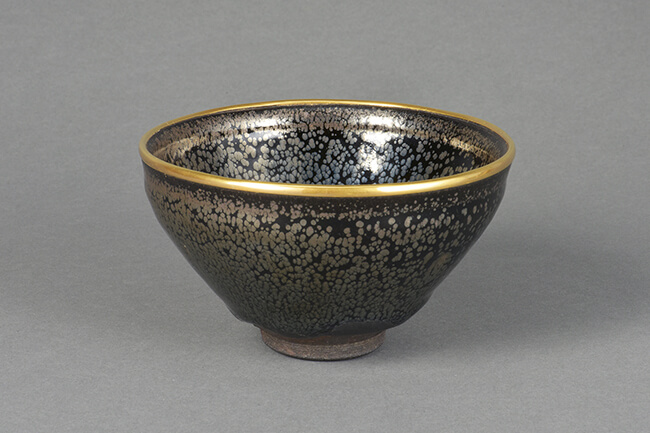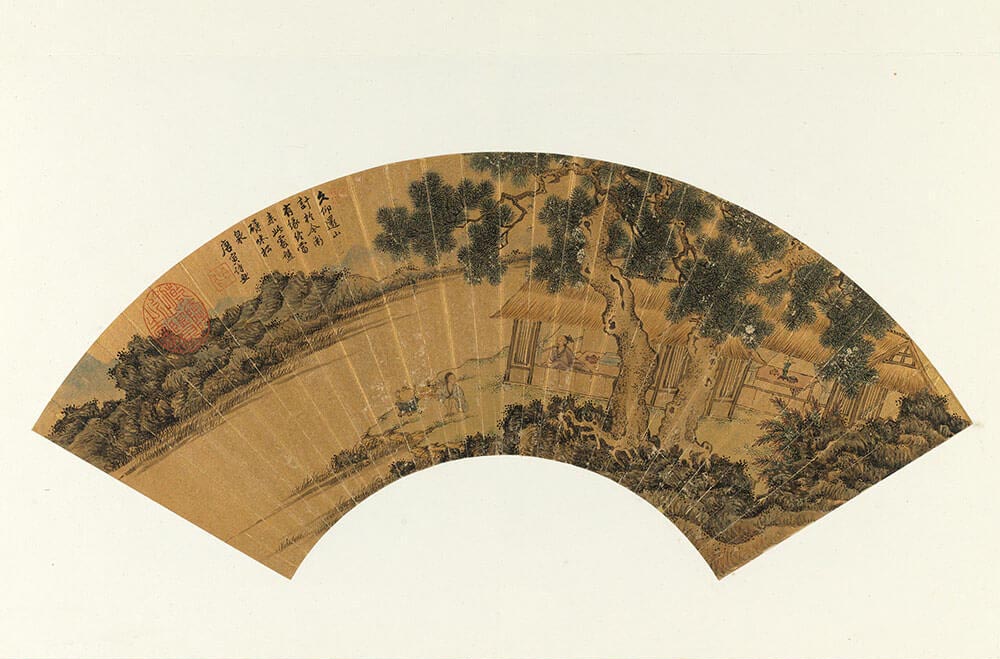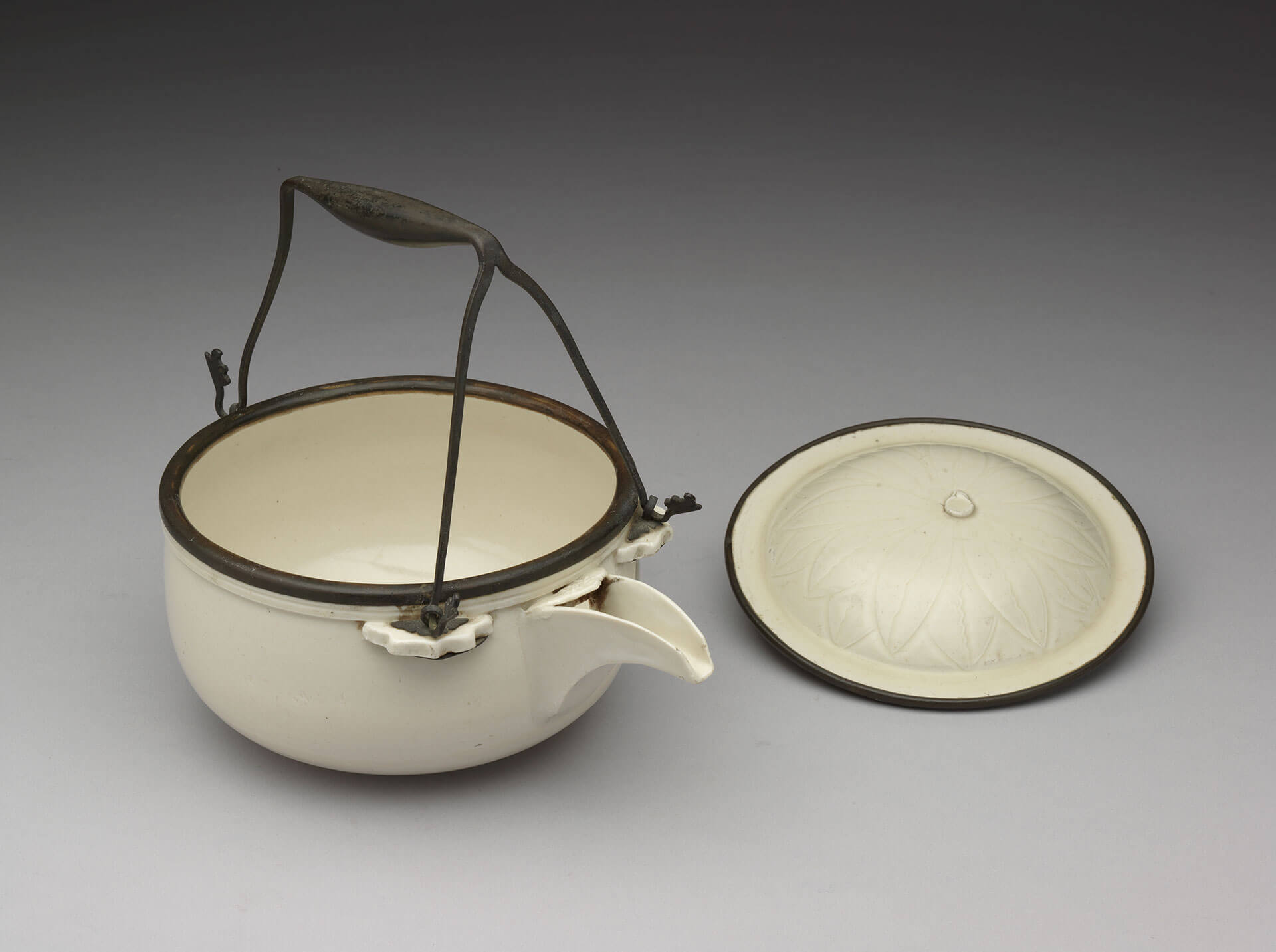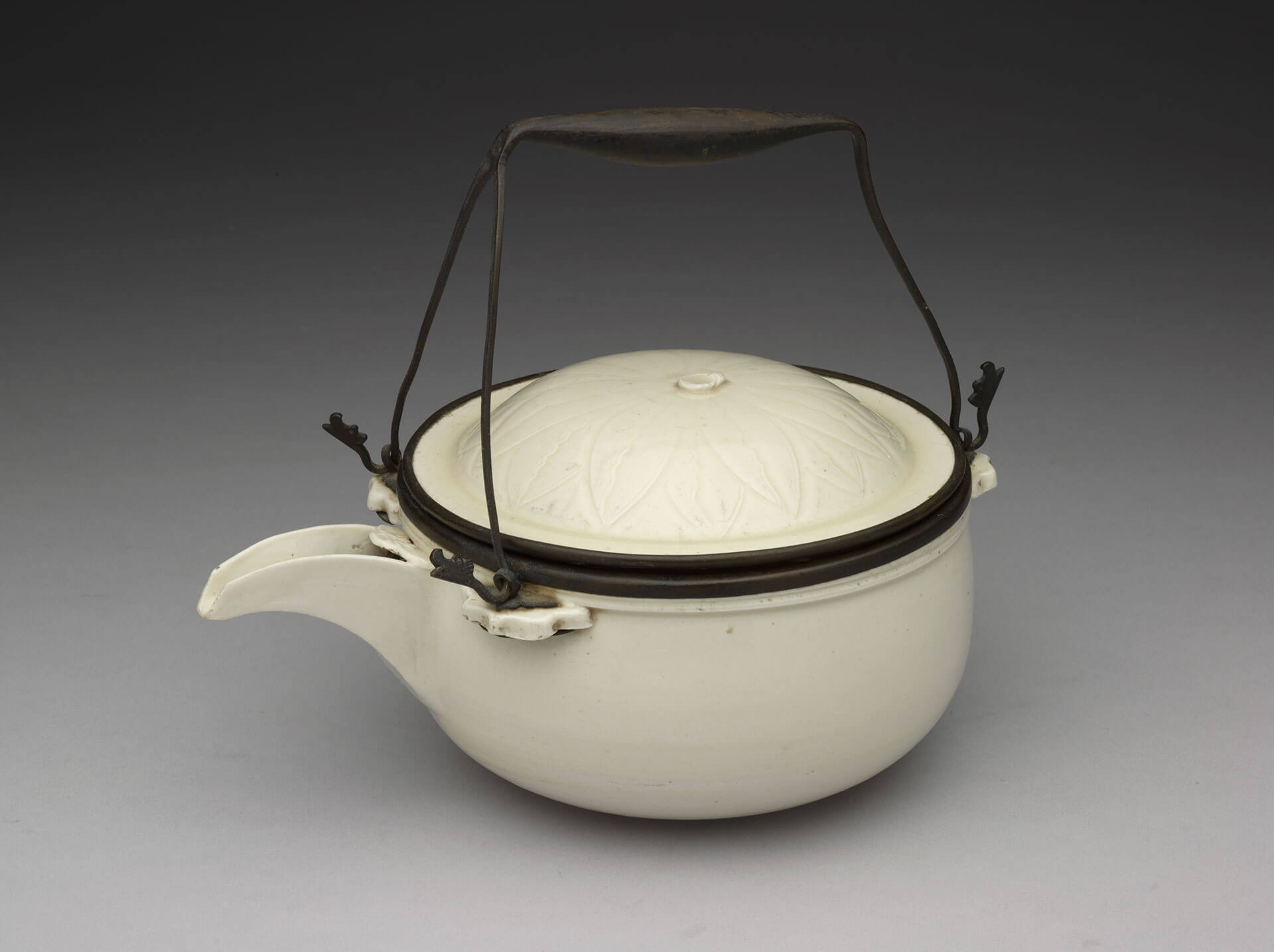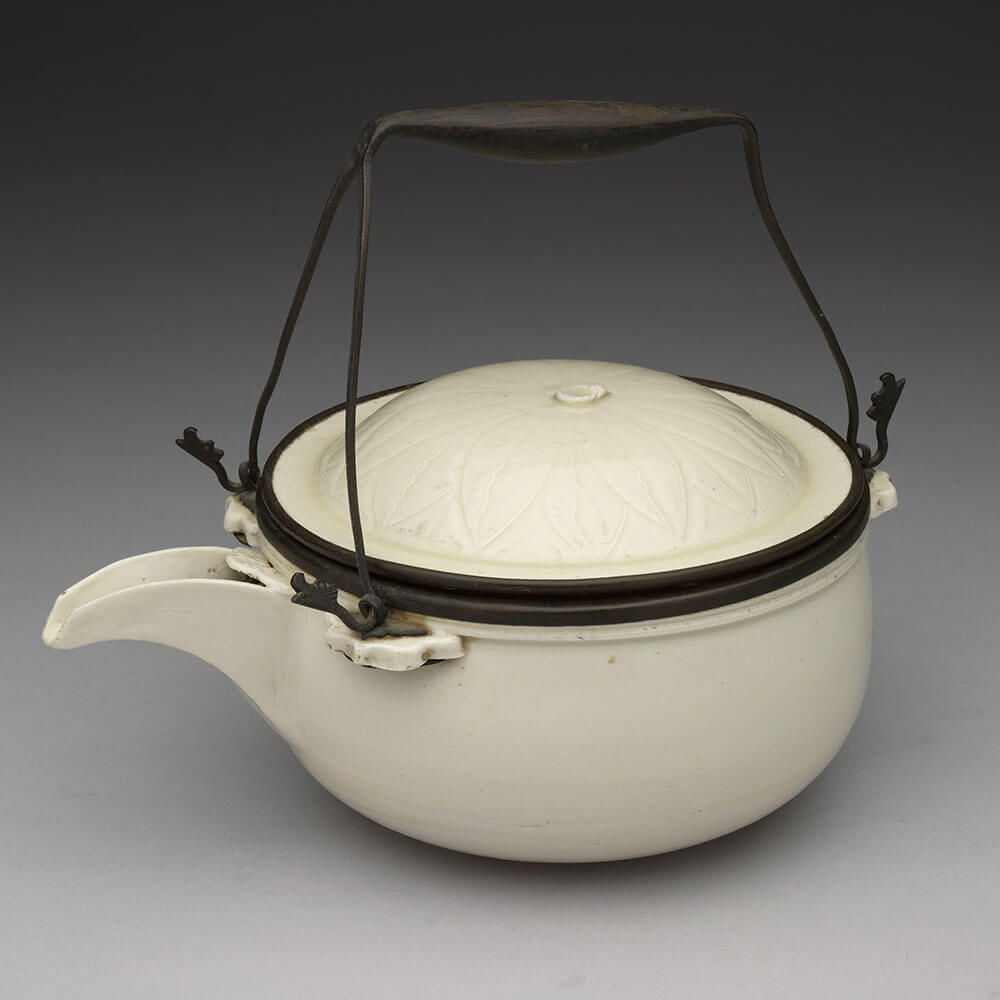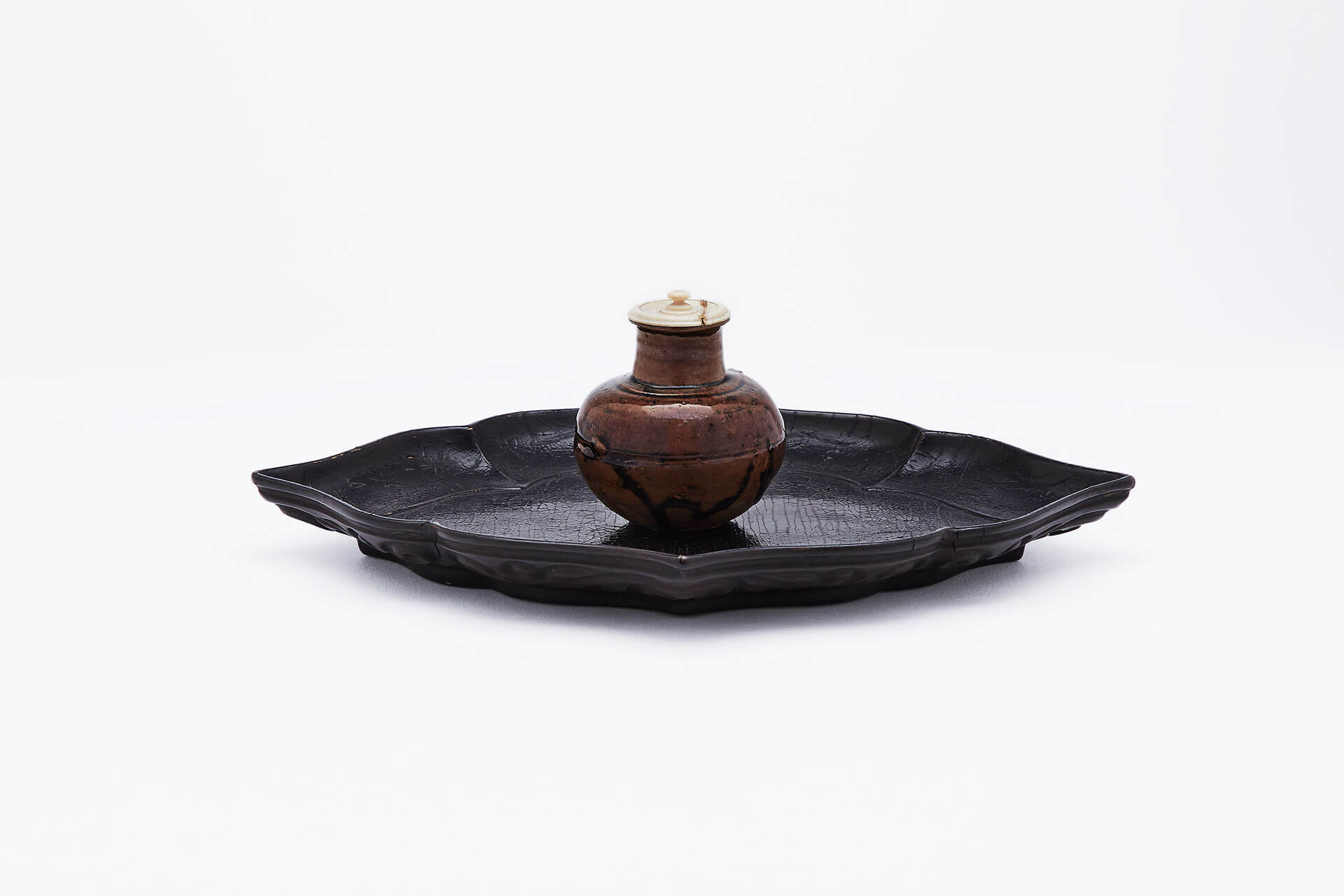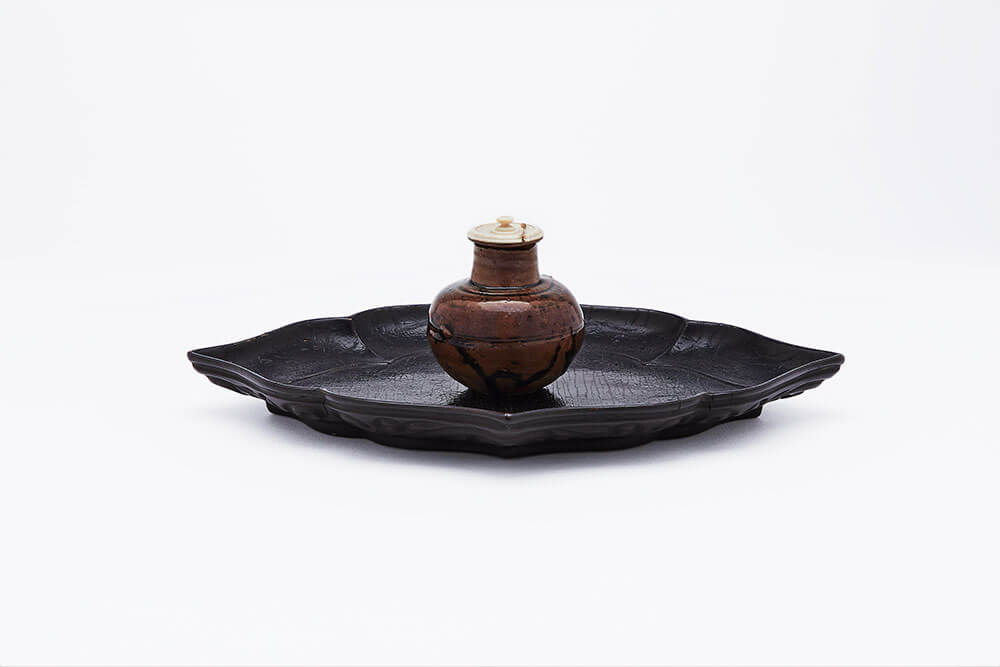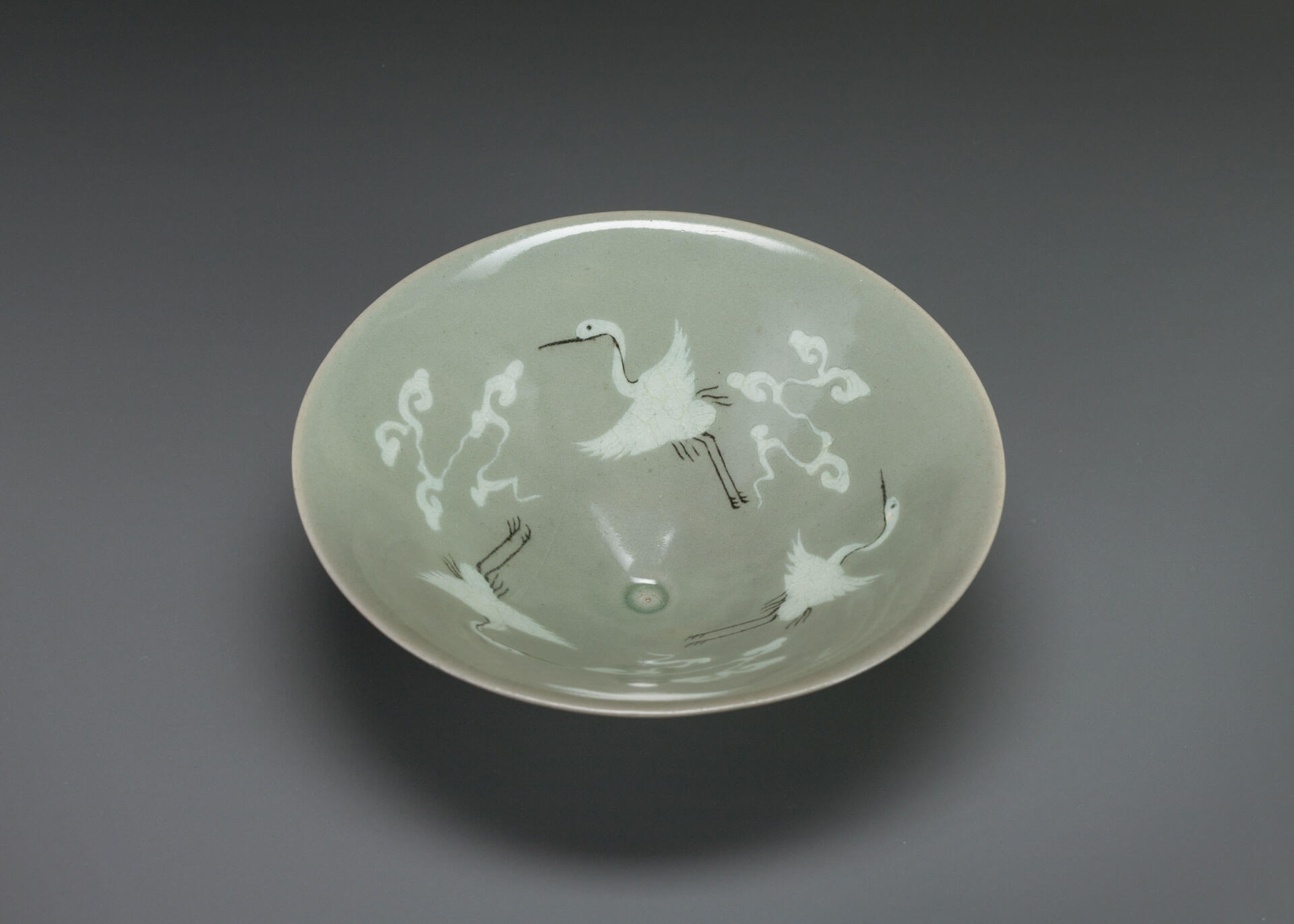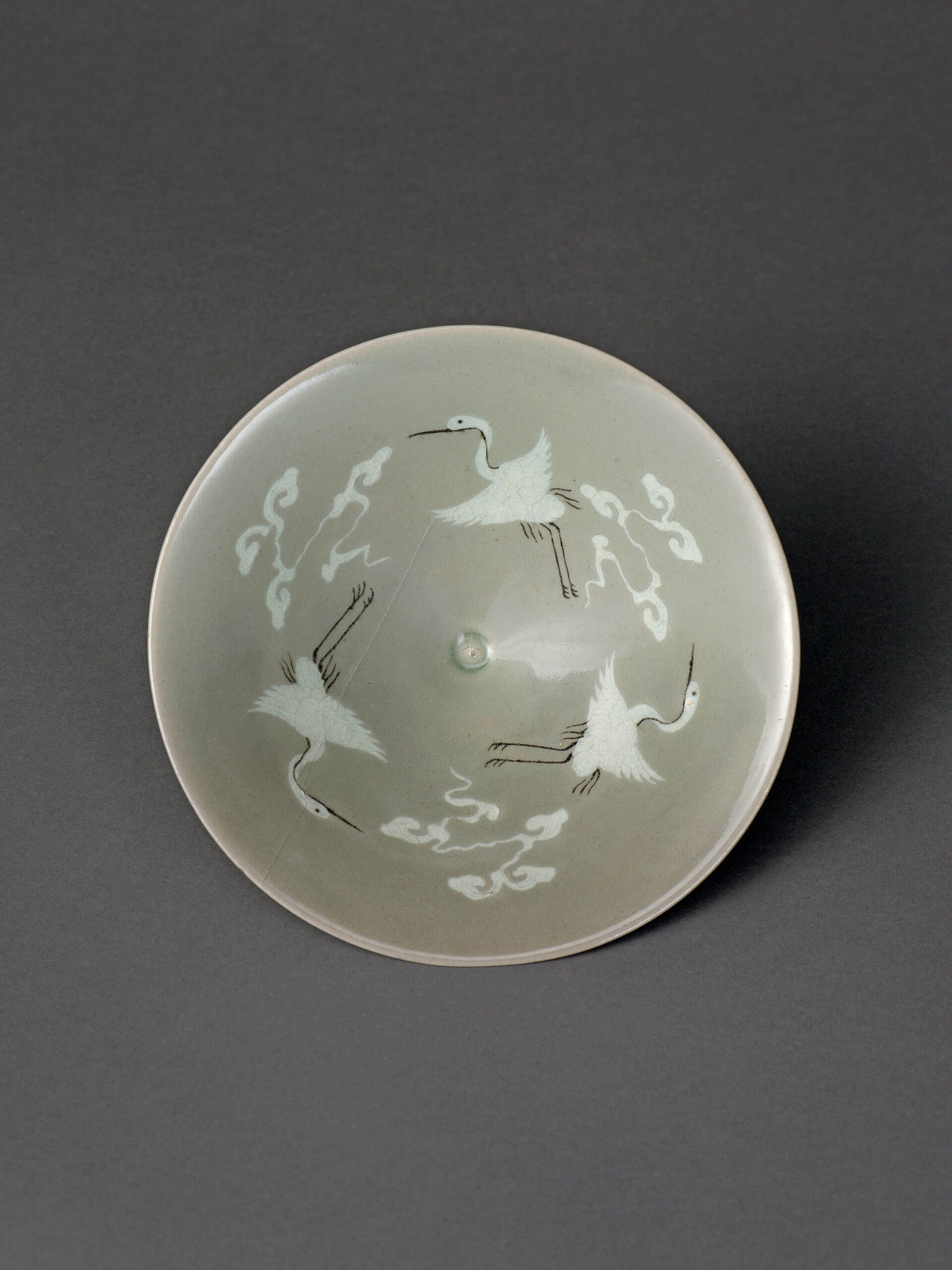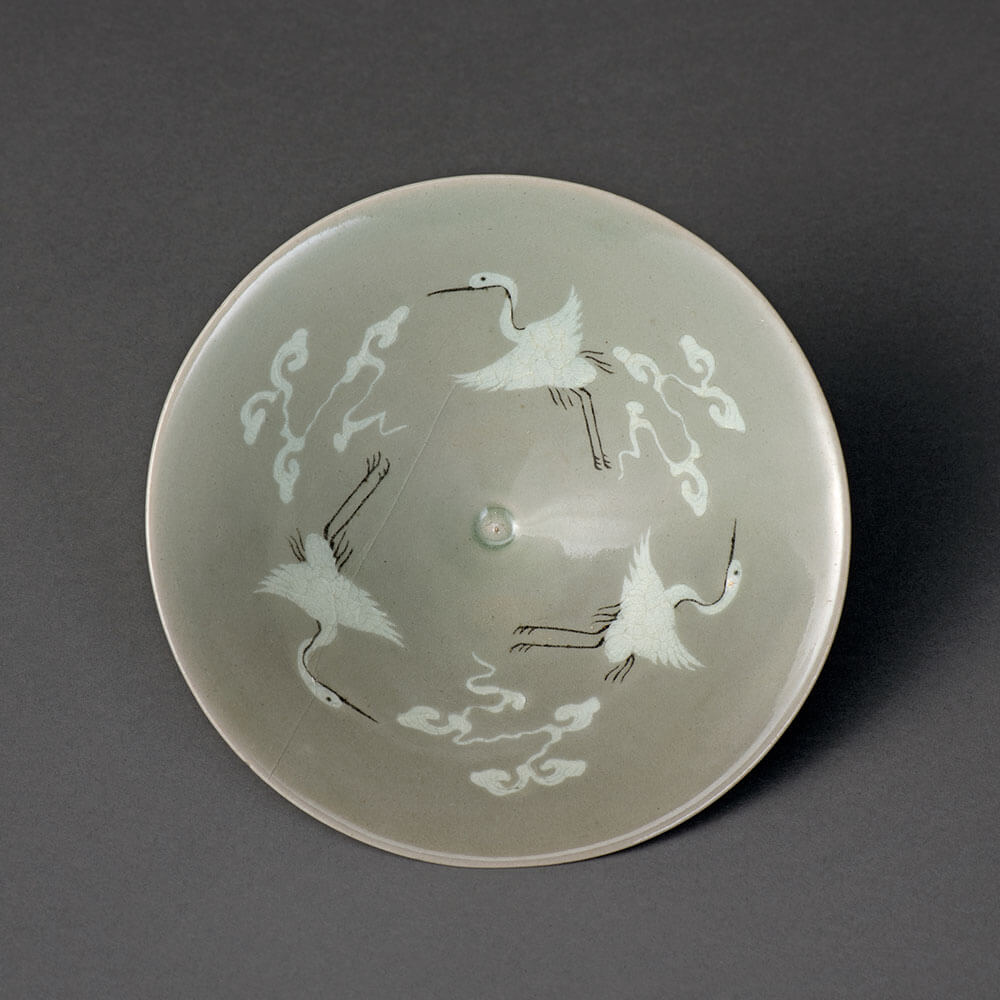Tasting Tea
For a millennium, drinking tea has been not only to taste its flavor, but also to show one's skill by whisking tea. The utensils for whisking tea such as tea cup, tea ewer, and cup stand have gradually become indispensable in Song people's daily life. The influence has resulted in the publication of monographs to teach people the standards of making tea, selecting tools, whisking tea, and tasting tea.
Southern Song dynasty, 12th-13th century Jian ware Tea bowl with silvery spots against Tenmoku glaze
- Collection of the Museum of Oriental Ceramics, Osaka
Black-glazed tea bowls from the Song dynasty are known as Tenmoku in Japanese. During the Muromachi period (1136–1573), Chinese Jian ware tea bowls, Yuteki Tenmoku in Japanese or "tea bowl with oil-spot pattern," were highly prized in Japan. This gold-rimmed tea bowl is covered with silvery spots and has iridescent patterns that glimmer against the dark background. A superb specimen of Yuteki Tenmoku, this work has been designated a national treasure in Japan. (Kobayashi Hitoshi)
Brewing Tea
- Tang Yin(1470-1524), Ming dynasty
Tang Yin (1470-1524), courtesy name Bohu, is hailed as one of the four masters of the Ming dynasty. In this painting, the master is sitting in a thatched house under a pine tree. He is looking outside at a young servant boiling water as if to draw something to the boy's attention. Inside the house are a tea set and a book in one room, and incense burners and a vase in another. It reflects leisure in life has long become an integral part of the literati existence and an expression of refined taste since the Song dynasty.
Lidded pot with three lugs and "chu" mark in white glaze
- Ding ware Northern Song to Jin dynasty, 12th -13th century
The Song people practiced both brewing tea (jiancha) and whisking tea (diancha). Brewing tea was inherited from previous dynasties. It involved putting finely ground tea leaves in the boiling water and sometimes ginger and salt were added as seasonings. The painting Brewing Tea collected by the NPM suggests that this white-glazed teapot with three lugs might have been used to brew tea on the stove. According to Su Shi's poem, a set of stove and kettle (diaozi) was the essential utensils for tea brewers. In addition to Ding ware, other archeologic finds include a silver tea kettle from Sichuan and a stone tea kettle from the tomb of the Lu family in Shanxi. The inscription chu on the rim might be a mark of the workshop.
Karamono tea container (Chaire) with round base, known as "Sogyu Marutsubo"
- Southern Song dynasty, 12th -13th century Collection of the Daitokuji Ryokoin, Kyoto
- Photo by Tadayuki Minamoto
The small caddy for powdered green tea is known as chaire in Japanese and is an important utensil used in tea ceremonies in Japan. Tea caddies originating from China were referred to as karamono chaire, and mainly came from China's Fujian province. This elegantly proportioned tea caddy, covered with luminous brown glaze, was originally in the collection of wealthy merchant and tea master Tsuda Sogyu (?–1591), who prepared tea for Oda Nobunaga and Toyotomi Hideyoshi, the "Great Unifiers" of Japan.
Bowl with inlaid cloud and crane design against celadon glaze
- Goryeo dynasty, 12th century
- Collection of the Museum of Oriental Ceramics, Osaka
Xu Jing (1091-1153) of the Northern Song dynasty highly praised Goryeo celadon for its exquisite craftsmanship and luminous jade color in Illustrated Travels of the Xuanhe Emissary to Goryeo (Xuanhe Fengshi Gaoli Tujin). Later on, a technique was developed that involved etching decorative motifs on the clay body and filling in the carved space with black or white slip. This beautifully glazed tea bowl is inlaid with a design of three cranes flying amid the clouds, making it a superb specimen of Goryeo teaware.
